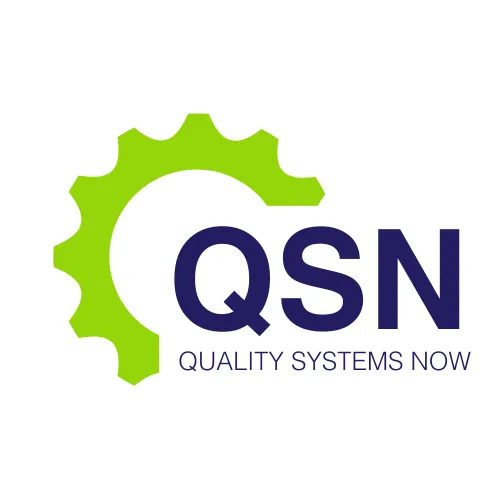LATEST NEWS

Training Programs Coupled with QMS Development
In the highly regulated environments of pharmaceutical, biotechnology, and medical device industries, the development and implementation of effective training programs are crucial. These programs ensure that all personnel are equipped with the necessary skills and knowledge to adhere to regulatory requirements, maintain high standards of quality, and ensure patient safety. When coupled with the development of Quality Management Systems (QMS), training programs become even more critical, as they facilitate the seamless integration of quality principles into everyday operations.
This is our area of expertise. At Quality Management Systems Now we provide tailored training solutions through our inhouse training platform, QSN Academy.
The Importance of Training Programs in Regulated Industries
Training programs are fundamental in regulated industries for several reasons:
Regulatory Compliance: Ensuring that all personnel are aware of and comply with regulatory requirements is essential for avoiding penalties and maintaining licenses.
Quality Assurance: Training ensures that employees understand and can implement quality assurance processes, thereby maintaining product quality and safety.
Operational Efficiency: Well-trained personnel can perform their tasks more efficiently and effectively, reducing errors and increasing productivity.
Continuous Improvement: Training fosters a culture of continuous improvement, encouraging employees to seek out and implement better practices.
Integrating Training Programs with QMS Development
The integration of training programs with QMS development ensures that quality principles are embedded in all organizational processes. This integration involves several key steps:
Needs Assessment and Planning
Skills Gap Analysis: Conduct a skills gap analysis to identify the training needs of different roles within the organization. This analysis should consider regulatory requirements, industry best practices, and specific organizational needs.
Training Objectives: Define clear training objectives aligned with the goals of the QMS. These objectives should focus on enhancing regulatory compliance, improving quality assurance processes, and fostering a culture of continuous improvement.
Resource Allocation: Allocate sufficient resources for the development and implementation of training programs, including budget, personnel, and training materials.
Developing the Training Program
Curriculum Design: Design a comprehensive training curriculum that covers all aspects of the QMS, including regulatory requirements, standard operating procedures (SOPs), quality control measures, and continuous improvement processes.
Training Materials: Develop high-quality training materials, including manuals, presentations, e-learning modules, and hands-on practice sessions. These materials should be tailored to the specific needs of different roles within the organization.
Instructional Methods: Utilize a variety of instructional methods to cater to different learning styles. This can include classroom training, online courses, workshops, simulations, and on-the-job training.
Implementation of Training Programs
Trainer Selection: Select qualified trainers who have both subject matter expertise and the ability to effectively communicate and engage with trainees. Trainers should be well-versed in the QMS and regulatory requirements.
Scheduling and Logistics: Plan and schedule training sessions to minimize disruption to operations. Ensure that all necessary logistical arrangements, such as training venues, equipment, and materials, are in place.
Participation and Engagement: Encourage active participation and engagement during training sessions. Use interactive techniques such as group discussions, case studies, and practical exercises to enhance learning.
Evaluation and Continuous Improvement
Assessment and Feedback: Implement assessment methods to evaluate the effectiveness of the training program. This can include quizzes, exams, practical assessments, and feedback surveys.
Performance Monitoring: Monitor the performance of trained personnel to ensure they are applying the skills and knowledge gained during training. Use key performance indicators (KPIs) to track improvements in quality and compliance.
Program Review and Updates: Regularly review and update the training program to address any identified gaps, incorporate new regulatory requirements, and reflect changes in the QMS. Continuous feedback from trainees and trainers should be used to improve the program.
Key Components of a Successful Training Program
A successful training program, particularly when integrated with QMS development, should include the following components:
Regulatory Training: Comprehensive training on relevant regulations and standards, such as GMP, ISO, FDA, and EMA guidelines. This ensures that all personnel understand the regulatory environment in which they operate.
QMS Training: Detailed training on the organization’s QMS, including its structure, processes, and documentation requirements. This helps employees understand their roles and responsibilities within the QMS.
SOPs and Work Instructions: Training on specific SOPs and work instructions relevant to each role. This ensures that employees can perform their tasks according to standardized procedures.
Quality Control and Assurance: Training on quality control and assurance processes, including inspection, testing, and validation procedures. This ensures that employees can effectively maintain product quality and safety.
Continuous Improvement: Training on continuous improvement methodologies, such as Lean, Six Sigma, and root cause analysis. This encourages employees to identify and implement improvements in processes and systems.
Challenges and Solutions in Implementing Training Programs
Implementing training programs, especially in conjunction with QMS development, can present several challenges:
Resource Constraints: Limited resources can hinder the development and implementation of training programs. Solution: Prioritize training needs and seek external support or partnerships to supplement internal resources.
Resistance to Change: Employees may resist changes introduced by new training programs or QMS processes. Solution: Communicate the benefits of the training and QMS, involve employees in the development process, and provide ongoing support and incentives.
Maintaining Engagement: Keeping trainees engaged and motivated throughout the training program can be challenging. Solution: Use interactive and varied instructional methods, provide hands-on practice opportunities, and recognize and reward participation and achievement.
Ensuring Consistency: Ensuring that training is consistently applied across the organization can be difficult. Solution: Standardize training materials and methods, conduct regular refresher courses, and monitor compliance with training requirements.
Implementing effective training programs, particularly when coupled with the development of Quality Management Systems, is essential for ensuring regulatory compliance, maintaining product quality, and fostering a culture of continuous improvement in regulated industries. By conducting a thorough needs assessment, developing comprehensive training curricula, and continuously evaluating and improving training programs, organizations can equip their personnel with the skills and knowledge necessary to uphold the highest standards of quality and safety. This integrated approach not only enhances operational efficiency but also ensures that the organization is well-prepared to meet the challenges of the regulatory environment and achieve long-term success.
Do you want to learn more? Book a Free 15 Minute Consulting Call.
